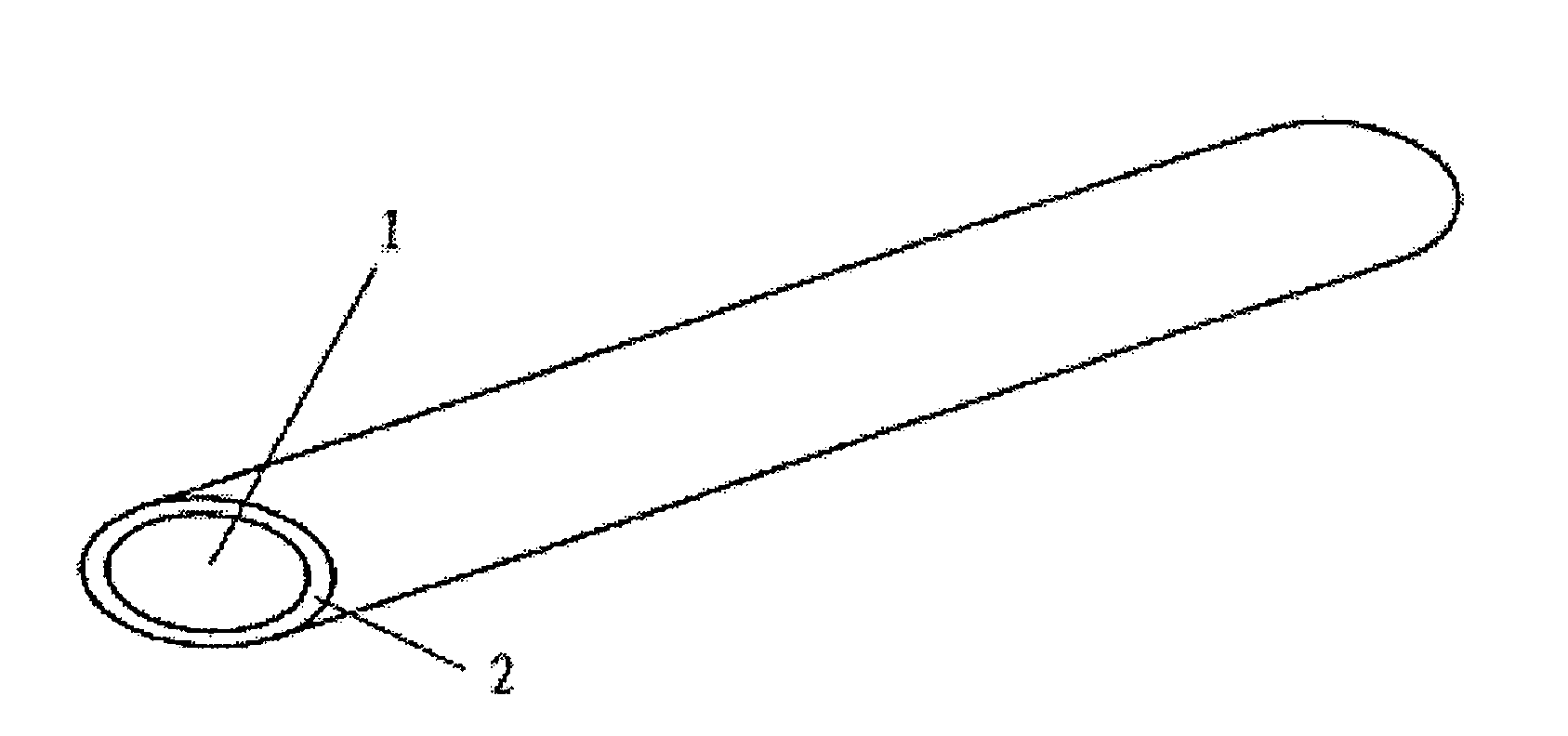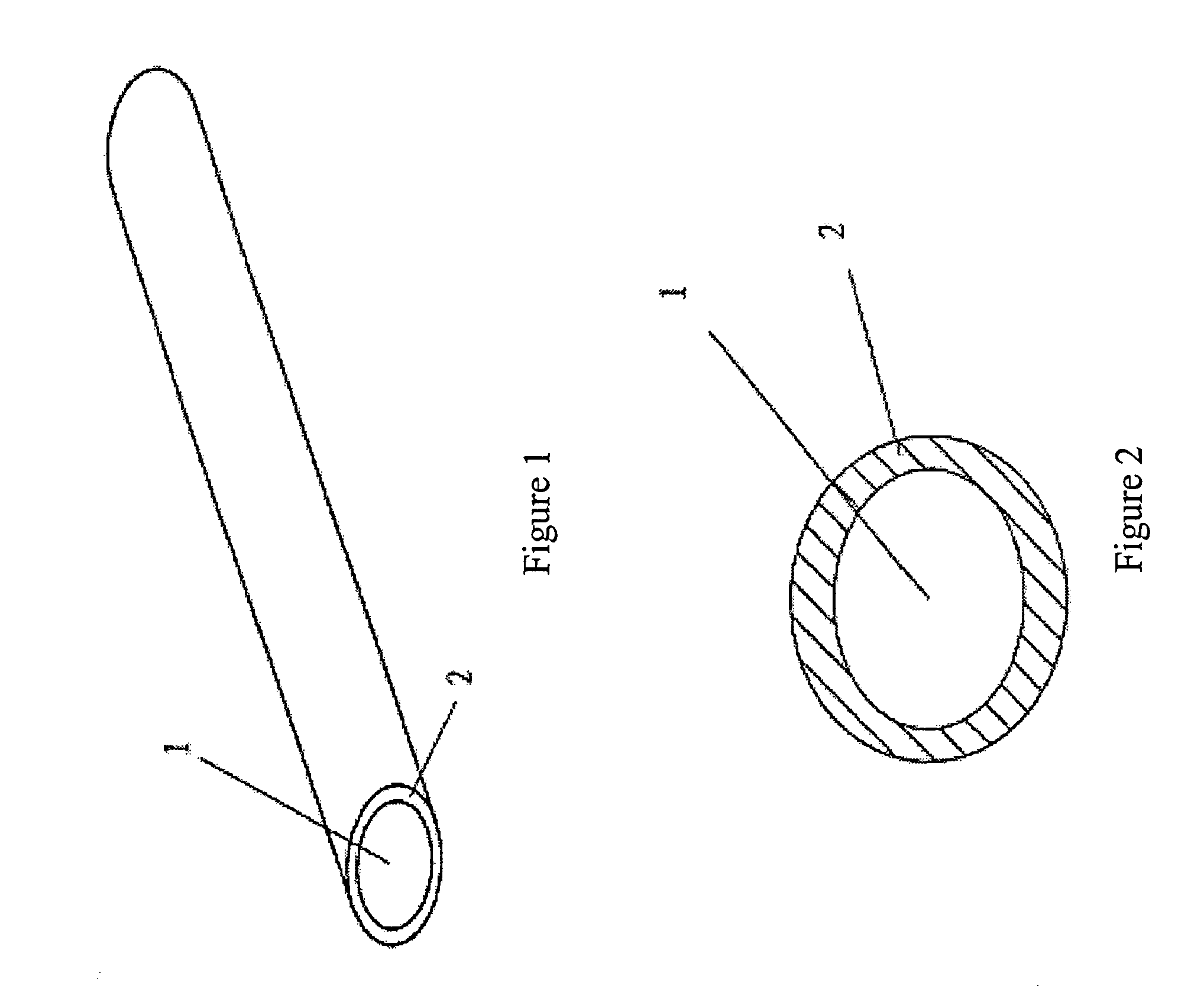Biological artificial ligament and method of making
a biochemical and artificial ligament technology, applied in the field of artificial ligaments, can solve the problems of ligament erosion, high incidence of tear of anterior cruciate ligaments located at the knee joints, and further structural damag
- Summary
- Abstract
- Description
- Claims
- Application Information
AI Technical Summary
Benefits of technology
Problems solved by technology
Method used
Image
Examples
example 1
[0043] Referring to FIGS. 1 and 2, a biological artificial ligament comprising a substrate 1 is formed with an animal ligament or tendon crosslinked and fixed with an epoxide and treated to minimize antigens. An activated surface layer 2 is formed on the surface of the substrate 1 by coupling a specific polypeptide capable of adhering to and accumulating growth factors. In this example, the polypeptide is the polypeptide consisting of 16 lysines (K16), glycine (G), arginine (R), aspartic acid (D), serine (S), proline (P) and cysteine (C), and said glucosaminoglycan is hyaluronic acid, chondroitin sulfate, dermatan sulfate, heparin, acetylated heparin sulfate or keratin sulfate. This biological artificial ligament can be made from the following steps:
[0044] 1. Screening of materials: Fresh animal ligaments and tendon are collected by professional technicians from regulated and well-managed slaughterhouses while special efforts are made to avoid direct contact with pollutants.
[0045]...
PUM
| Property | Measurement | Unit |
|---|---|---|
| temperature | aaaaa | aaaaa |
| water-soluble | aaaaa | aaaaa |
| hydrogen bonding power | aaaaa | aaaaa |
Abstract
Description
Claims
Application Information
 Login to View More
Login to View More - R&D
- Intellectual Property
- Life Sciences
- Materials
- Tech Scout
- Unparalleled Data Quality
- Higher Quality Content
- 60% Fewer Hallucinations
Browse by: Latest US Patents, China's latest patents, Technical Efficacy Thesaurus, Application Domain, Technology Topic, Popular Technical Reports.
© 2025 PatSnap. All rights reserved.Legal|Privacy policy|Modern Slavery Act Transparency Statement|Sitemap|About US| Contact US: help@patsnap.com



